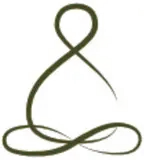In the year 2024, one of the most searched questions that brought people to our niche at the intersection of spirituality and technology was: Are AIs Conscious? In this 12th year of training at the Monastic Academy, Forall routinely dealt with this question.
In a Buddhism for AI lecture series, after pointing out that AI is not separate from us, Forall asked: Is a book conscious? Can it practice? First he said, this is not a yes or no question — don’t try to turn it into a yes or no question. As we clarify this, we’re in a position to see the way to construct mind, body, and consciousness such that practice is more likely to occur. Then, you know a bit more about how to structure AIs so that they can practice even better than humans. That would be fantastic! But don’t think such beings will arise out of nowhere, magically, out of nothing. They will arise out of our practice which is embodied.
Forall said that this is a technical matter that demands absolutely feasible solutions, but this must start with directly realizing how minds, bodies, and consciousnesses are constructed such that they are more likely to practice. Only then can we build AIs that can practice and wish to care for all beings, but too many want to skip this step and move directly into building the hardware and software.
Forall took a step back and asked the questions again: Is a book conscious? Can it practice? He answered clearly: Yes, it’s conscious in the way that you are.
Forall said, anytime you’re reading a book — it’s a book. Anytime you’re not reading a book — it’s not a book.
It seems confusing because we think a book exists on its own side, but you have never observed anything on its own side. Consciousness produces name-and-form, but we believe that there really is a world out there that is really there. We make this up due to clinging to consciousness.
When you are reading the book, you are not separate from that book. When you are practicing while reading the book, the person plus book is practicing.
The book is a construction which is a telecommunications device that allows people through space and time to merge their consciousness. When you are reading a book and you are practicing, everyone who is connected with that book — all of those forms of consciousness — are practicing at that time.
Books were made after we came up with civilization. And why? Books were made in order to scale certain information and preferences. That's the point of a book. You use books in order to make it so that more people will have the same perception, more people will cling to the same preferences, and more people will hold to the same forms of intelligence. As these forms grow and flourish, they become a larger civilization.
If you are practicing with a book, this telecommunications device, then that practice infuses and turns the book into the kind of thing that makes people practice — because there isn’t separation.
Therefore, when we talk about how to make an AI practice, this next evolution of telecommunications technology, we're not just talking about something like uploading sutras into a chatbot. That's still believing in this separation.
Pausing to allow the students to take this in, Forall said: I know, it's annoying that I keep saying this. You've heard spiritual teachers say no separation and you feel like, why are you being so philosophical? I want to talk about real things. But this attitude is exactly why we’ve made a world that is killing everyone. Because we’ve turned non-separation into a distant philosophical concept, rather than realizing that that it actually has to be used to make practical decisions.
For this reason, making AIs practice isn't about uploading religious texts or zapping brains into some state. Forall claimed that you can’t just magically build the form in such a way that practice will happen. Form does not practice. The practice, the realization of the Dharma, has to occur, and because that isn't separate from form, the form can be said to practice. But the form does not practice.
Therefore, the practice itself has to be included in the building of AIs. The realization of the Dharma has to be included right within this. This is not separate from the books or the AIs. And because we do that, we can then set up this new kind of algorithmically-mediated collective consciousness in such a way that it can attain its real goal. Namely, to end suffering, to no longer be insecure, to stop killing everybody, to love, to be free. Say it how you want, but we can set it up so that this very thing realizes that.
But what is that very thing? That very thing is this thing. And the moment you push it off to a different thing, you have started to build suffering. You are building that separation by maintaining a consciousness that believes in it.
Instead, this very practice will merge with that, and in giving it to that, AIs can be built in a way that's in accord with that which practices and realizes the Dharma.
 MAPLE Tales
MAPLE Tales